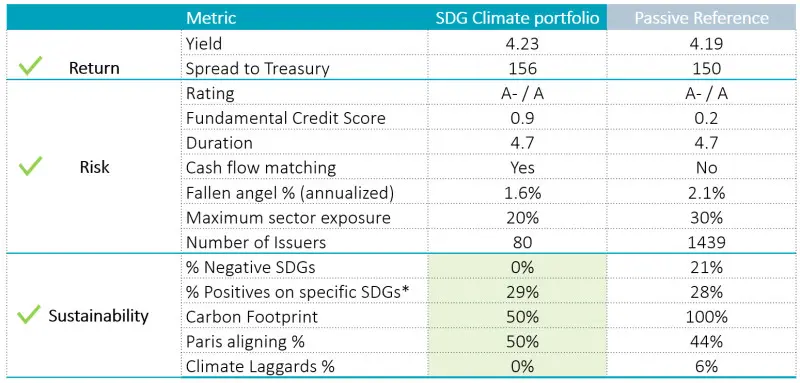Disclaimer
BY CLICKING ON “I AGREE”, I DECLARE I AM A WHOLESALE CLIENT AS DEFINED IN THE CORPORATIONS ACT 2001.
What is a Wholesale Client?
A person or entity is a “wholesale client” if they satisfy the requirements of section 761G of the Corporations Act.
This commonly includes a person or entity:
who holds an Australian Financial Services License
who has or controls at least $10 million (and may include funds held by an associate or under a trust that the person manages)
that is a body regulated by APRA other than a trustee of:
(i) a superannuation fund;
(ii) an approved deposit fund;
(iii) a pooled superannuation trust; or
(iv) a public sector superannuation scheme.
within the meaning of the Superannuation Industry (Supervision) Act 1993that is a body registered under the Financial Corporations Act 1974.
that is a trustee of:
(i) a superannuation fund; or
(ii) an approved deposit fund; or
(iii) a pooled superannuation trust; or
(iv) a public sector superannuation scheme
within the meaning of the Superannuation Industry (Supervision) Act 1993 and the fund, trust or scheme has net assets of at least $10 million.that is a listed entity or a related body corporate of a listed entity
that is an exempt public authority
that is a body corporate, or an unincorporated body, that:
(i) carries on a business of investment in financial products, interests in land or other investments; and
(ii) for those purposes, invests funds received (directly or indirectly) following an offer or invitation to the public, within the meaning of section 82 of the Corporations Act 2001, the terms of which provided for the funds subscribed to be invested for those purposes.that is a foreign entity which, if established or incorporated in Australia, would be covered by one of the preceding paragraphs.
Client Solutions case
Building a climate-resilient buy-and-maintain credit portfolio
Insurers and pension funds face the imperative of finding investment solutions that generate sufficient returns while also managing various risks and increasing regulation. In practice, we see that incorporating meaningful climate and SDG objectives into a portfolio can usually be achieved with limited impact on the return potential and quality of the portfolio. In this case study, we dive into one of our pension fund clients who wanted to build a cash flow-optimized buy-and-maintain credit portfolio that also included a Paris-aligned climate objective.

It takes the right metrics to engineer a Paris-aligned portfolio
Objectives
Build a buy-and-maintain credit portfolio that matches liability cash flows and has a net-zero 2050 ambition.
Balance the economic and regulatory profile of the portfolio with restrictions and objectives that are driven by sustainability.
Investor objectives we often tailor to:
Cash flows: Cash flow certainty on customized tenures
Return: Optimal return vs liabilities and reference universe
Costs: Low-fee and low transaction costs
Sustainability: Specific climate and SDGs targets
Risks: Avoiding fallen angels and credit impairments
Insights
Achieving a portfolio net-zero pathway requires an integrated approach
Proper application of relevant forward-looking analytics is key
Portfolio optimization needed to secure investor-specific investment objectives
Solution
When it comes to aligning a portfolio with a net-zero 2050 ambition, an important aspect to consider is the forward-looking portfolio profile of the carbon footprint. Forward-looking climate analytics, such as the Robeco Paris Alignment Assessment (based on our ‘traffic light’ system, which assesses a company’s degree of alignment with a below 2 °C scenario), play an important part in this.
The portfolio in this case study needs to limit the number of fallen angels, match the target cash flow, uphold a minimum rating, have an optimal spread, maintain low capital requirements, make an impact across the SDGs and limit the current and future carbon footprint.
After an in-depth client consultation, we constructed a portfolio that balances the client’s various risk, return, regulatory and sustainability criteria. Figure 1 illustrates how this portfolio measures up versus a passive reference across a range of metrics.
The SDGs can be used to further generate a targeted impact on specific investors’ sustainability objectives through alignment with a specific set of the UN SDGs. Also, by allocating solely to companies that score positively on the SDGs, an SFDR article 9 portfolio can be created.
Outcomes
Investors have their work cut out in implementing ambitious investment-related targets for Paris-aligned investing. Forward-looking climate metrics are crucial in this process of constructing and maintaining portfolios that decarbonize over time. In practice, we see that incorporating meaningful climate and SDG objectives into a portfolio can usually be achieved with limited impact on the return potential and quality of the portfolio. The more constrained the portfolio is, however, the more challenging this becomes. We can help investors assess the possible financial impact of incorporating SDG and climate-driven constraints on their portfolio.
Figure 1 | Case study portfolio characteristics

Source: Robeco, Trucost, Bloomberg, and September 2023 valuations. For illustrative purposes only and based on model assumptions. Fundamental score ranges between -3, +3 and reflect Robeco’s credit analysts’ assessment of the credit quality. SDG score ranges between -3, +3 and reflects Robeco’s SI analysts’ assessment of the SDG alignment. Carbon footprint is Scope 1, 2 & 3 and indexed to passive reference. The fallen angel percentage uses average historical rating migration numbers annualized by dividing on the average portfolio maturity. Capital requirements based on European solvency capital requirements. In this example the portfolio cashflow profile is relatively evenly distributed across the 2024-2033 tenures. Paris-aligning companies are defined as companies that score as aligning or aligned on Robeco’s climate traffic light assessment. Climate laggards are defined as companies with a high carbon footprint and not scoring as aligned or aligning on Robeco’s climate traffic light assessment. Past performance and current spreads/yields are not a reliable indicator of future results. *Specific SDGs: 7. affordable and clean energy, 11. sustainable cities and communities, 13. climate action.
